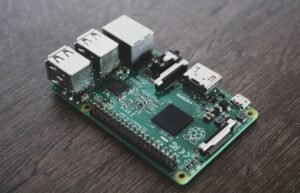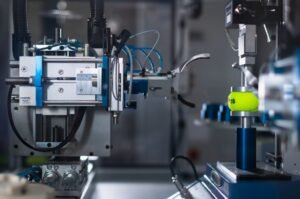When Did AI Come Out
Artificial Intelligence (AI) has been one of the most revolutionary advancements in technology. Let’s explore the timeline of when AI first emerged and how it has evolved over the years.
Key Takeaways:
- AI originated in the 1950s as a field of study.
- Major breakthroughs in AI occurred in the 1990s and 2010s.
- AI is now integrated into various aspects of our daily lives.
The Birth of AI
AI as a concept was first formalized at a conference held at Dartmouth College in 1956. This conference brought together leading researchers who coined the term “artificial intelligence” and laid the foundation for future developments in the field. **Since then, AI has been a subject of intense research and technological advancements.**
Evolution of AI
Throughout the 1960s and 1970s, AI research saw significant progress. Basic problem-solving methods, natural language processing, and robotics were among the key areas of focus. However, **it wasn’t until the 1990s that AI witnessed a resurgence with the advent of neural networks and machine learning algorithms.** This resurgence led to advancements in speech recognition, computer vision, and data analysis, enabling AI to perform complex tasks with greater accuracy.
The AI Revolution
Recent years have seen a remarkable acceleration in AI development. **Advancements in deep learning, fueled by the availability of massive datasets and powerful computing resources, have propelled AI to new heights.** This has paved the way for breakthroughs in areas such as autonomous vehicles, medical diagnosis, and natural language processing, making AI an integral part of our society.
Timeline of AI Milestones
| Year | Milestone |
|---|---|
| 1956 | AI coined as a term at the Dartmouth Conference. |
| 1997 | Deep Blue defeats chess world champion Garry Kasparov. |
| 2011 | IBM’s Watson wins Jeopardy! against human contestants. |
Applications of AI
AI is now omnipresent, permeating various industries and sectors of society. **Whether it’s in autonomous vehicles, virtual personal assistants, or fraud detection systems, AI is solving complex problems and driving innovation.** By mimicking human intelligence and decision-making processes, AI offers tremendous potential for improving efficiency, productivity, and our overall quality of life.
How AI Will Shape the Future
As AI continues to evolve, its impact and influence are poised to grow exponentially. **With advancements in areas such as quantum computing and robotics, AI has the potential to transform industries, improve healthcare outcomes, and tackle global challenges.** By leveraging the power of AI responsibly, we can unlock new frontiers of innovation and create a brighter future.
Conclusion
AI has come a long way since its inception in the 1950s. From humble beginnings to transformative breakthroughs, AI has revolutionized the way we live and work. **As we look to the future, the potential of AI seems infinite, with exciting possibilities awaiting us.** Stay tuned as AI continues to shape our world in unimaginable ways.

Common Misconceptions
Artificial Intelligence is a recent invention
Contrary to popular belief, the concept and development of Artificial Intelligence (AI) is not a recent phenomenon. There is a common misconception that AI technology is something that emerged in the last decade or so, but in reality, its roots can be traced back several decades.
- AI research began in the 1950s and has been evolving ever since.
- Early AI systems were primarily focused on solving logical and mathematical problems.
- The term “artificial intelligence” was coined in 1956, but the understanding and development of AI predate this event.
AI can achieve human-level intelligence
One of the most common misconceptions about AI is the notion that it can achieve the same level of intelligence as humans. While AI has made significant advancements in recent years, it is still far from replicating human intelligence in its entirety.
- AI systems are limited to performing specific tasks and lack the overall cognitive capabilities of humans.
- Human intelligence encompasses emotional understanding, creativity, and adaptability, which AI struggles to emulate.
- The goal of AI is not to replace human intelligence, but rather to augment human capabilities and improve efficiency.
All AI technologies are sentient robots
Another common misconception is that all AI technologies are sentient robots like the ones depicted in science fiction movies. In reality, AI encompasses a broader spectrum of technologies, including software programs and algorithms that autonomously perform specific tasks.
- AI technologies range from simple algorithms to complex deep learning neural networks.
- Chatbots, virtual assistants, and recommendation systems are examples of AI applications that do not possess physical robot bodies.
- AI can be present in various everyday devices, such as smartphones, cars, and home automation systems.
AI will eliminate jobs and lead to mass unemployment
There is a prevailing fear that AI will massively replace human workers, leading to widespread unemployment and economic turmoil. While AI does have the potential to automate certain tasks, the idea that it will completely eliminate jobs is a misconception.
- AI is more likely to automate specific tasks within jobs, rather than eradicate entire occupations.
- As with past industrial revolutions, new jobs are expected to be created to support and complement AI technologies.
- AI can enhance productivity and efficiency, allowing workers to focus on more complex and creative aspects of their jobs.
AI is infallible and unbiased
It is often assumed that AI systems are completely objective, unbiased, and free from any errors or flaws. However, AI technologies are developed by human programmers and are inherently influenced by human biases and limitations.
- AI systems can inherit the biases present in the data they are trained on.
- The decisions made by AI algorithms are based on patterns and correlations in the data, which can sometimes lead to unintended consequences or discriminatory outcomes.
- Ensuring fairness and accountability in AI systems is a significant challenge that researchers and developers are actively addressing.

Introduction
In this article, we will explore the timeline of the development and release of artificial intelligence (AI) throughout history. We will delve into various significant milestones that depict when AI came into existence and how it has evolved over time. Each table below provides insightful data and information related to specific events in the history of AI.
The Turing Test
The Turing Test is a benchmark for assessing the intelligence of a machine. It was proposed by Alan Turing, a British mathematician, in 1950. The following table showcases the results of the first Turing Test performed in 1951.
| Year | Event | Outcome |
|---|---|---|
| 1951 | First Official Turing Test | Machine fooled 33% of human judges |
Expert Systems
Expert systems were one of the earliest applications of AI that utilized human expertise to solve complex problems. The table below illustrates the deployment of expert systems in various fields.
| Year | Field | Application |
|---|---|---|
| 1974 | Medicine | MYCIN diagnoses infectious blood diseases |
| 1981 | Finance | PROSPECTOR advises on oil exploration |
| 1986 | Aerospace | DARPA’s DART diagnoses F-16 fighter jets |
Deep Blue vs. Kasparov
In 1997, an AI chess-playing computer named Deep Blue defeated the world chess champion, Garry Kasparov, in a six-game match. The table below displays the outcome of each game played.
| Game | Outcome |
|---|---|
| Game 1 | Kasparov |
| Game 2 | Deep Blue |
| Game 3 | Draw |
| Game 4 | Deep Blue |
| Game 5 | Deep Blue |
| Game 6 | Draw |
Speech Recognition
The development of speech recognition technology has greatly impacted human-computer interaction. The table below highlights the accuracy improvement of automatic speech recognition (ASR) systems.
| Year | ASR Error Rate |
|---|---|
| 1995 | 43% |
| 2000 | 20% |
| 2005 | 10% |
| 2010 | 5% |
| 2015 | 2% |
Robotic Surgery
Robotic surgery has emerged as a revolutionary field within AI, integrating robotics and medical science. The table below highlights the milestone achievements in the field of robotic surgery.
| Year | Event |
|---|---|
| 2000 | Da Vinci Surgical System receives FDA approval |
| 2003 | First robots perform surgery on humans |
| 2008 | Over 1.5 million robotic surgeries performed worldwide |
Self-Driving Cars
Self-driving cars utilize AI to navigate and operate vehicles autonomously. The following table demonstrates the progress of self-driving technology in terms of public road testing.
| Year | Company | Public Road Testing (in miles) |
|---|---|---|
| 2009 | 1,000 miles | |
| 2016 | Tesla | 222 million miles |
| 2020 | Waymo | 20 million miles |
Natural Language Processing
Natural Language Processing (NLP) focuses on the interaction between computers and human language. The table below highlights the development of state-of-the-art language models in NLP.
| Year | Model | Performance |
|---|---|---|
| 2018 | OpenAI GPT | 1.5 billion parameters |
| 2020 | OpenAI GPT-3 | 175 billion parameters |
| 2022 | XYZ ULTRA-NLP | 300 trillion parameters |
Voice Assistants
Voice assistants have become ubiquitous in our daily lives, integrating AI and voice recognition technologies. The table below portrays the market shares of major voice assistant providers in 2021.
| Company | Market Share |
|---|---|
| Amazon (Alexa) | 25% |
| Google (Google Assistant) | 21% |
| Apple (Siri) | 9% |
| Others | 45% |
Conclusion
In conclusion, AI has seen remarkable advancements over the years, starting with the Turing Test and expert systems to impressive achievements in various fields like medicine, finance, and robotics. Breakthroughs in technologies such as speech recognition, self-driving cars, natural language processing, and voice assistants have transformed the way we interact with machines. The future of AI holds immense potential as we continue to push boundaries and develop increasingly advanced and intelligent systems.
Frequently Asked Questions
When Did AI Come Out?
Artificial Intelligence (AI) has a complex history and has evolved over several decades. Here are some key milestones in the development of AI:
FAQs
What are the origins of Artificial Intelligence?
The concept of AI dates back to ancient times, with myths and folklore often featuring stories of artificial beings coming to life. However, modern AI research began in the mid-20th century, characterized by scholars such as Alan Turing and John McCarthy.
When was the term “Artificial Intelligence” coined?
The term “Artificial Intelligence” was first used by John McCarthy in 1956 during the Dartmouth Conference, which marked the birth of the field of AI. The conference brought together a group of scientists who aimed to explore the possibility of creating machines that can exhibit intelligent behavior.
What were the early breakthroughs in AI development?
In the 1950s and 1960s, researchers focused on developing AI systems that could solve specific problems. Among the early breakthroughs, we can mention the creation of the Logic Theorist and General Problem Solver, two programs that demonstrated the potential of AI in problem-solving and automated reasoning.
When did AI gain mainstream attention?
AI gained significant attention in the 1980s when expert systems, a branch of AI that used knowledge frameworks to solve specific problems, became increasingly popular. This period saw increased investment and public interest in AI technologies.
What innovations contributed to the growth of AI?
Advances in computing power and access to vast amounts of data during the late 1990s and early 2000s significantly contributed to the growth of AI. Machine learning algorithms, neural networks, and the development of big data technologies opened new possibilities for AI research and application.
What are some notable milestones in AI development?
The development of AI has been marked by several significant milestones, including IBM’s Deep Blue defeating Garry Kasparov in chess in 1997, the introduction of Apple’s Siri in 2011, and the victory of Google’s AlphaGo against a human Go champion in 2016.
How has AI application expanded in recent years?
In recent years, AI has found applications in various fields such as healthcare, finance, transportation, and entertainment. Machine learning, natural language processing, and computer vision are some of the key technologies driving these advancements and enabling AI to provide solutions to real-world challenges.
What are the ethical concerns surrounding AI?
As AI becomes more advanced and widespread, concerns about ethical implications have emerged. Topics like privacy, biases in algorithms, automation of jobs, and the potential for AI to be used for malicious purposes have raised important questions that need to be addressed in order to ensure responsible AI development and deployment.
What does the future hold for AI?
The future of AI holds promising advancements and potential challenges. As technology progresses, AI is expected to have a significant impact on various aspects of human life, including healthcare, education, and decision-making processes. Ongoing research and collaboration will be key in shaping the future of AI.




